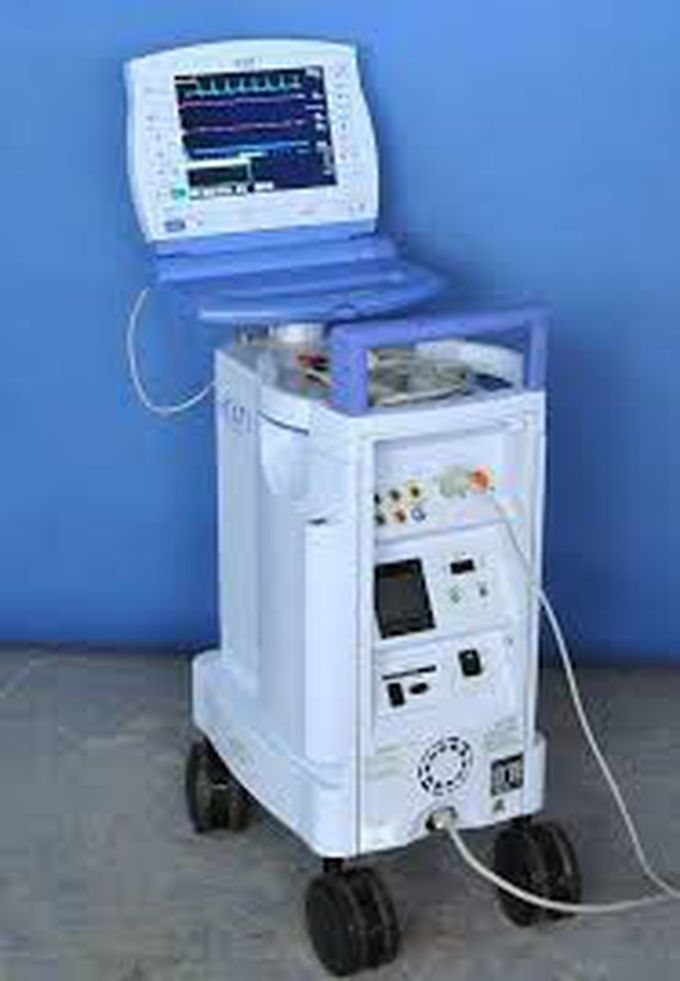


IABP Machine
The intra-aortic balloon pump (IABP) is a mechanical device that increases myocardialoxygen perfusion while at the same time increasing cardiac output. Increasing cardiac output increases coronary blood flow and therefore myocardial oxygen delivery. It consists of a cylindrical polyethylene balloon that sits in the aorta, approximately 2 centimeters (0.79 in) from the left subclavian artery[1] and counterpulsates. That is, it actively deflates in systole, increasing forward blood flow by reducing afterload through a vacuum effect. It actively inflates in diastole, increasing blood flow to the coronary arteriesvia retrograde flow. These actions combine to decrease myocardial oxygen demand and increase myocardial oxygen supply.[2][3] A computer-controlled mechanism inflates the balloon with helium from a cylinder during diastole, usually linked to either an electrocardiogram (ECG) or a pressure transducer at the distal tip of the catheter; some IABPs, such as the Datascope System 98XT, allow asynchronous counterpulsation at a set rate, though this setting is rarely used. Helium is used because its low viscosity allows it to travel quickly through the long connecting tubes, and has a lower risk than air of causing an embolism should the balloon rupture. @medicalfacts Sanjeev Gupta Thanks

